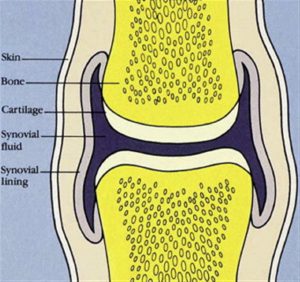
Do your knees click randomly? Do you ever hear a pop in your joint when you move? Do your knuckles crack suddenly, for no reason? Did you mum ever told you that cracking your knuckles will give you arthritis?
Noisy or cracking joints is a normal phenomenon and joints often crack of their own accord as we move through the day. You will be familiar with the neck that cracks as you turn it, the ankle that clicks as you rotate it. Don’t even get me started on knees that sometimes have a whole symphony going on. You may cause the joint to crack, just because it feels good. However, there is a common myth that noisy or cracking joints are a sign of arthritis. Is this true?
The question is why do our joints crack and is it bad for us?
Our joints contain gases including nitrogen, oxygen and carbon dioxide which gradually builds up in the synovial fluid. Synovial fluid is the clear fluid found inside joints. It has a number of functions including lubricating the joint. When our joint moves beyond its usual range, small cavities of partial vacuum form in the synovial fluid and then rapidly collapse, producing a sharp sound. This phenomenon is known as “cavitation”. Cracking noises (cavitation) occurs during simple movements, or by moving the joint beyond its usual range.

The answer is yes. When you or your physiotherapist pushes your joints beyond their usual range, you may not hear a sound and so assume that nothing has happened. But, the result is the same.
No! Cracking sounds from joints is normal. There is no literature to support the the idea that cracking causes arthritis.
While you should be unconcerned with the noises you hear coming from you joints, there are instances where you might like to seek advice. These include:
Osteoarthritis doesn’t always cause pain and stiffness. However, recent research suggests that non painful knees that become noisy, may eventually show signs of wear and tear. Research found that more than 75 percent of people who developed knee osteoarthritis reported grating, cracking, or popping sounds in or around their knee joint in the year leading up to developing symptoms.
If you have any of the above and are worried about your joint, seek the advice of your doctor or physio. Our team are happy to help those in Penrith, Jordan Springs or Caringbah. If you can’t come to us, we also offer telehealth video consultations.
If you would like to look after your knees, learn more about our new knee program here.
Ken says:
Ignore your Mum and listen to Ken. Your joints may be noisy, but if they don’t bother you, they are fine.
Here are some references to our source material:
Rizvi A, Loukas M, Oskouian RJ, Tubbs RS. Let’s get a hand on this: Review of the clinical anatomy of “knuckle cracking”. Clin Anat. 2018;31(6):942-945. doi:10.1002/ca.23243
Grace H. Lo Michael T. Strayhorn Jeffrey B. Driban Lori Lyn Price Charles B. Eaton Timothy E. Mcalindon. Subjective Crepitus as a Risk Factor for Incident Symptomatic Knee Osteoarthritis: Data From the Osteoarthritis Initiative. Arthritis Care & Research. 2018; 70(1):53-60. doi:10.1002/acr.23246